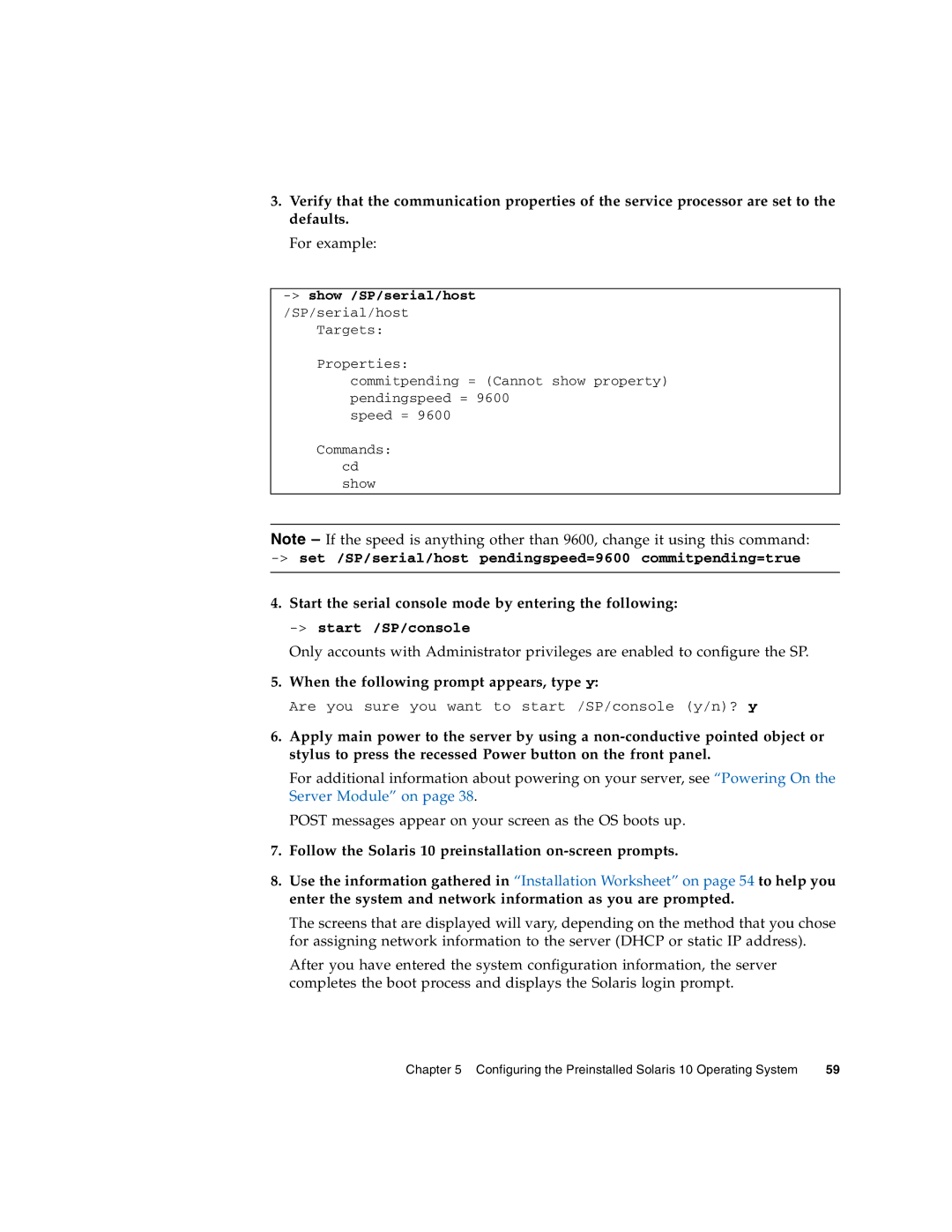
3.Verify that the communication properties of the service processor are set to the defaults.
For example:
Targets:
Properties:
commitpending = (Cannot show property) pendingspeed = 9600
speed = 9600
Commands: cd show
Note – If the speed is anything other than 9600, change it using this command:
4.Start the serial console mode by entering the following:
Only accounts with Administrator privileges are enabled to configure the SP.
5.When the following prompt appears, type y:
Are you sure you want to start /SP/console (y/n)? y
6.Apply main power to the server by using a
For additional information about powering on your server, see “Powering On the Server Module” on page 38.
POST messages appear on your screen as the OS boots up.
7.Follow the Solaris 10 preinstallation
8.Use the information gathered in “Installation Worksheet” on page 54 to help you enter the system and network information as you are prompted.
The screens that are displayed will vary, depending on the method that you chose for assigning network information to the server (DHCP or static IP address).
After you have entered the system configuration information, the server completes the boot process and displays the Solaris login prompt.
Chapter 5 Configuring the Preinstalled Solaris 10 Operating System | 59 |
